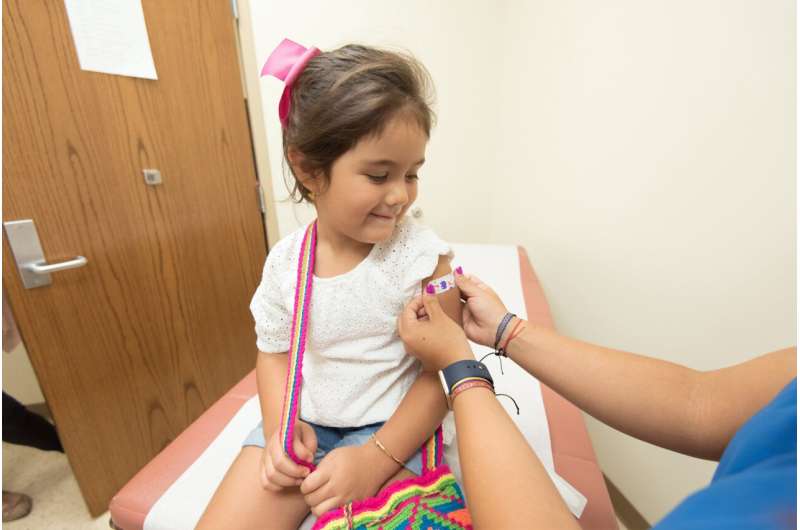
On Sept. 20, Pfizer-BioNTech announced that it’s preparing to submit data to the Food and Drug Administration on the initial results of its COVID-19 vaccine study in school-age children. The move signaled a big step toward expected emergency use authorization of the vaccine for kid ages 5–11.
The Phase 2–3 clinical trial included data from 2,268 participants, of whom approximately 150 were enrolled in Stanford’s trial site. Below are answers to several frequently asked questions about the trial and what happens next.
Q. What did the trial show, and what needs to happen before COVID-19 vaccines become available to children?
Two smaller doses of the vaccine—10 micrograms per shot, rather than the larger adult dose of 30 micrograms—given to children three weeks apart elicited a robust immune response comparable to that seen in adults in vaccine trials, the results showed.
“The data is very encouraging,” said Yvonne Maldonado, MD, the Taube Professor of Global Health and Infectious Diseases and professor of pediatrics and of epidemiology and population health at the Stanford University School of Medicine. Maldonado is leading the site of the pediatric trials for six-month-old through 11-year-old children at Stanford.
“Kids are not small adults, and we couldn’t assume that a vaccine would behave exactly the same way in their bodies,” she said. “As a pediatrician, I felt it was extremely important to test these vaccines for safety and efficacy in children.”
The FDA will conduct an independent review of the trial’s raw data and decide whether to extend the emergency use authorization for this vaccine to children aged five to 11. Pending FDA and Centers for Disease Control review and approval, children in this age group are expected to able to receive vaccines starting in mid- to late October.
Stanford Children’s Health has already made the vaccine available to children ages 12 and older at all its primary care sites and its pediatric emergency department at 900 Quarry Road in Palo Alto. The FDA and CDC have already provided authorization for use of the Pfizer vaccine in these age groups. Stanford Children’s Health is also opening a COVID-19 vaccination and testing site in the main garage at Lucile Packard Children’s Hospital Stanford at 725 Welch Road, Palo Alto.
Clinicians at all of these sites will offer the vaccine to children aged five to 11 as soon as the FDA and CDC authorize it. Vaccination appointments and further details are on the Stanford Children’s Health website.
Q. What is Stanford’s role in the pediatric vaccine trials?
Stanford is one of 40 study sites nationwide. Each participant received two doses of the vaccine or of a placebo. Researchers are tracking several aspects of their responses, including blood levels of antibodies to the vaccine and whether or not the participants become ill with COVID-19. Children participating in the placebo arm of the study will receive the active vaccine after they have been enrolled in the trial for six months, and the trial will continue for another 18 months to monitor the vaccine’s long-term safety and effectiveness.
Q. When will the vaccine become available to babies, toddlers and preschoolers?
Vaccine trials in children who are six months through four years old are ongoing. The Phase 1 trials to determine the appropriate vaccine dosage in younger children began in May and included participants at Stanford’s clinical trial site. Data from clinical trials that are needed to extend the emergency use authorization to children younger than five are anticipated to be shared with the FDA by late 2021 or early 2022.
People younger than 18 make up about a quarter of the U.S. population. More than 5.5 million U.S. children have tested positive for COVID-19 since the pandemic began, tens of thousands have been hospitalized, and at least 480 children have died of the disease. Children are also vulnerable to multisystem inflammatory syndrome, or MIS-C, a complication of COVID-19 that typically occurs a few weeks after viral infection and can affect the heart and other organs.
Vaccinating children will help protect them from illness and make it safer for them to participate in important childhood activities, such as attending school. It will also help prevent them from spreading the virus to the people around them. In addition, fewer infections across the population will reduce opportunities for the virus to mutate, and will slow the development of more dangerous variants.
Q. How does the vaccine work?
Source: Read Full Article
